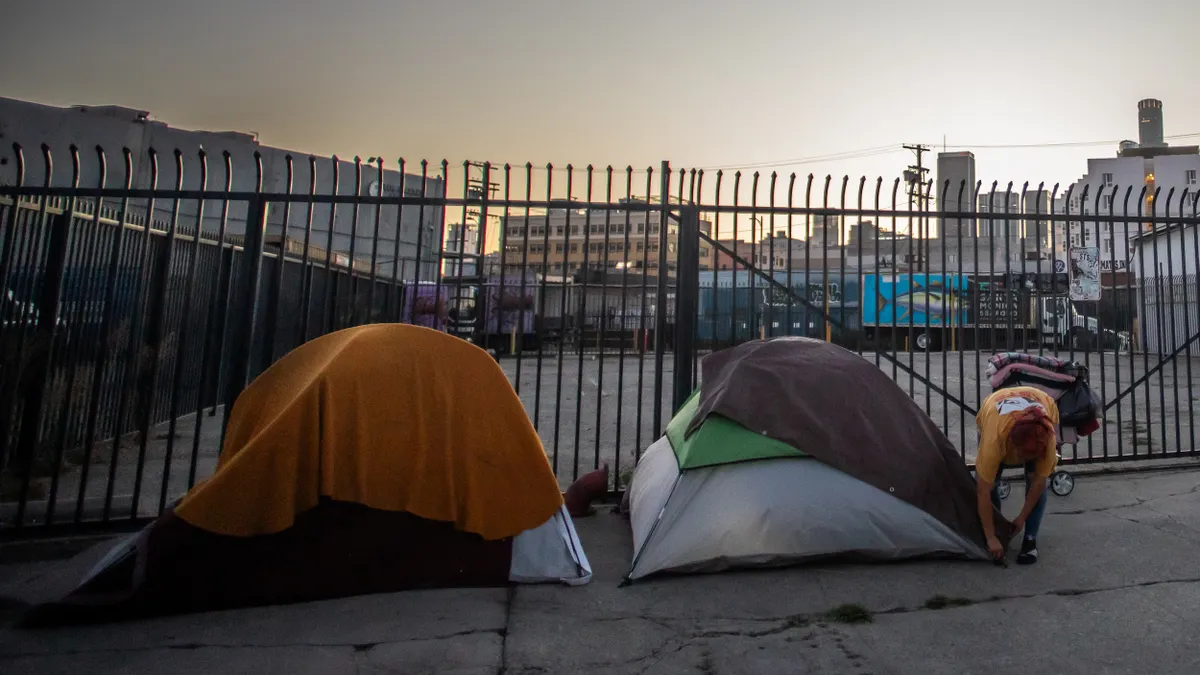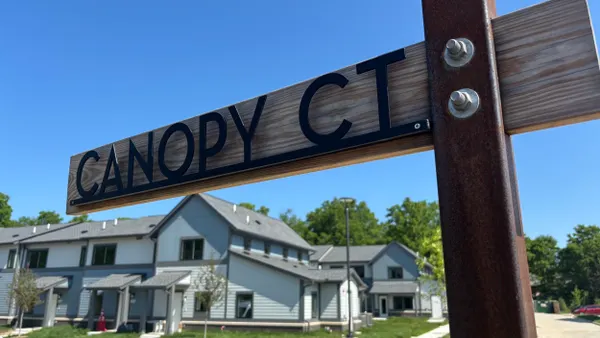Dive Brief:
- Criminalizing behaviors often associated with people experiencing homelessness is not effective in reducing homelessness, a recent study found.
- Because there is no proof that criminal ordinances reduce homelessness, communities that impose these penalties are left bearing the cost of the “criminalization efforts,” which is “therefore a net welfare loss,” according to the report published in Policy Studies Journal.
- Creating community partnerships to make more affordable housing and wraparound services available is the best approach to reducing long-term homelessness, said Hannah Lebovits, assistant director of the Institute of Urban Studies at the University of Texas at Arlington and one of the report’s authors.
Dive Insight:
President Donald Trump last week signed an executive order to end “endemic vagrancy” that would give discretionary grant priority to states and municipalities that enforce prohibitions on open illicit drug use, urban camping and loitering, and “urban squatting” and expand indefinite forced treatment for people who “suffer from serious mental illness or substance use disorder, or who are living on the streets and cannot care for themselves.”
The order also seeks to end “‘housing first” policies that “deprioritize accountability and fail to promote treatment, recovery, and self-sufficiency” and harm-reduction programs such as drug-injection sites.
“Shifting homeless individuals into long-term institutional settings for humane treatment through the appropriate use of civil commitment will restore public order,” the order states. “Surrendering our cities and citizens to disorder and fear is neither compassionate to the homeless nor other citizens.”
Lebovits said local governments are increasingly favoring criminal ordinances to deter homelessness, which led her to question if these “draconian” methods are effective.
The study she co-authored with Andrew Sullivan, assistant professor in the University of Central Florida’s School of Public Administration, compared communities that have passed criminal ordinances with those that have not and found that both experienced similar trends in homelessness rates.
Deterrence logic suggests that levying fines or jail time on people who engage in behaviors such as panhandling or public drunkenness reduces homelessness. But those don’t prevent people from becoming homeless or provide the services to help people experiencing homelessness find homes, Lebovits said.
“If I simply just cannot afford to live, the idea that I might be fined or that a cop might stop me or someone might tell me to move along or I might even have to spend a night in jail, that’s not going to keep me from being on the street if I have nowhere else to go,” Lebovits said.
Imposing fees and fines and constructing prisons solely to house the homeless doesn’t work, she said. “All the research indicates that it will be a very expensive non-solution.”
Creating community partnerships aimed at increasing affordable housing and other types of services to help people find and maintain shelter is a more successful approach, according to the study.
“That is the best approach,” Lebovits said. “Even that approach will not stop all of this, but what it can do is quickly reorient the system to approach homelessness in a different way that reduces the likelihood of long-term homelessness.”










